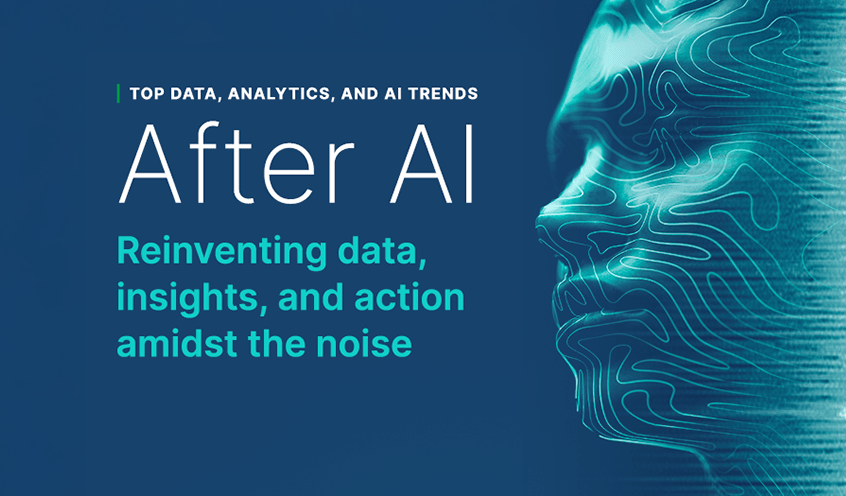Finance has been at the forefront of enterprise analytics for decades. Over the years, these analytics have evolved from reactive, descriptive analytics related to financial performance, treasury holdings, and inventory management to predictive and prescriptive analytics for risk, credit, and financial business modeling. The latter, often called Active Intelligence, enables real-time decision making in the context of a business process and will continue to evolve over the next decade, driven by two big trends: artificial intelligence (AI) and digitization.
We are already seeing this evolution in action. For example, finance teams at software companies are working with marketing to understand early stage buying signals that reduce the cost of acquisition and grow the lifetime value of customers.
The role of finance is transitioning from after-the-fact analyzer, assisting in the development of macro-decisions to active business partner driving the individual moments and micro-decisions that transform the business in real-time. With this shift comes necessary changes in mindset and investment in how to participate in new ways. This blog will explore three ways the real-time, context rich insights of Active Intelligence can support the CFO.
Continuous Data Integration
The speed at which business is done today means that the traditional month-end financial statement analysis to identify trends or incidents that could affect the P&L is no longer enough. Decisions need to be made in the moment when incidents occur, informed by real-time data.
The Active Intelligence Platform allows finance teams to combine multiple, complex sources of data that can be used to analyze financial performance, develop forecasts and run highly flexible financial simulations – in the moment. It does that through continuous integration of data. Bringing together data from multiple sources across an organization to provide complete, accurate, and up-to-date datasets.
By unifying siloed data and delivering more complete and accurate financial analytics insight, CFOs can dig deeper into the data and explore expense, procurement, and contract data to discover the real cost of doing business and identify new ways to reduce costs and increase profitability. This is where the integration of data from SAP and other ERP software solutions is particularly important, as it allow CFOs to unlock value from information that is at the core of most organizations’ operations.
The shift toward real-time data analysis also allows finance teams to accurately compare forecasting with actuals in real-time for ongoing trend analysis and to accelerate closing at period-end. They can also view the relative IRR of a top product line’s historical performance, then instantly shift view based on geography, distribution model, or other factors to gain deeper insight to mitigate future risks. This agility ultimately empowers the finance team to inform Lines of Business when action needs to be taken, rather than reporting on an event after the fact.
Automated Sales Forecasting With Machine Learning
While it may feel like a future technology, machine learning is quickly augmenting the capabilities of many analytics tools thanks to the cloud and its limitless computing capability, with 20% of C-level executives now using machine learning as a core part of their business.
Simple to use, code-free solutions can integrate machine learning into predictive models by automating model generation and testing business scenarios by efficiently connecting data and identifying key drivers. The models are trained on potentially large data sets and learn from patterns that are often indiscernible by humans. But its real value lies in its ability to provide detailed insight into key drivers and why predictions were made to inform more accurate sales forecasting.
Immediate Alerts to Proactively Reduce Bill Payment Delays
An important part of the Active Intelligence Platform for CFOs is the use of real-time alerts. Driven by data, these alerts can spot outliers and anomalies in data. Importantly, for the finance department, business users can create self-service alerts directly, which can then be centrally configured and managed for more widespread distribution across the organization. And, increasingly, these alerts in the digital world can alter the customer or partner behavior, much in the way that Amazon proposes products based on buyer preferences.
Alerting can also help reduce bill payment delays to make billing and accounts more efficient. CFOs and their teams can set up thresholds and alerts for in-the-moment monitoring of spend to avoid budget derail and compel action.
Prioritizing Data Analysis For Impactful Decision-Making
CFOs are facing increasing pressure to improve the accuracy of financial reporting while decreasing turnaround time to support business growth. By implementing Active Intelligence systems, CFOs can make budgeting and forecasting flexible, breaking the dependence on static quarterly and yearly forecasts and switching to continuous real-time insights for decision making that can drive true change.
For more information on how you can put Active Intelligence at the heart of your financial analytics, watch the On Demand Webinar: Unleash the Power of Your Finance Data.














































